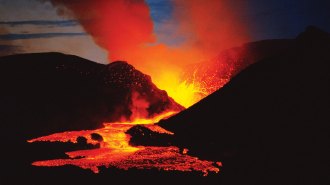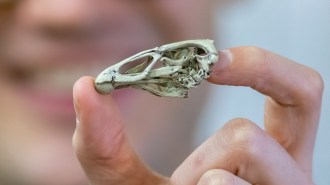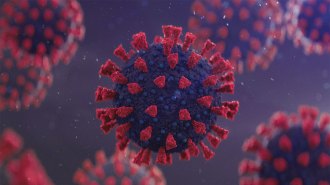Science & Society
Sign up for our newsletter
We summarize the week's scientific breakthroughs every Thursday.
-
 Chemistry
ChemistryChemists are reimagining recycling to keep plastics out of landfills
Recycling plastics is really hard, and usually creates low-quality materials that aren’t good for much. Chemists are trying to change that.
-
 Physics
Physics‘Fundamentals’ shows how reality is built from a few basic ingredients
In ‘Fundamentals,’ physics Nobel laureate Frank Wilczek shares essential lessons from physics.
-
 Climate
ClimateHow much will Africa capitalize on cheap renewable energy as its power grid grows?
An analysis of the successes and failures of past electrical power projects across Africa suggests the continent isn’t likely to go green before 2030.
-
 Psychology
PsychologyThe COVID-19 pandemic made U.S. college students’ mental health even worse
College students struggled with mental health problems before the pandemic. Now, some vulnerable students are even more at risk.
By Sujata Gupta -
 Science & Society
Science & SocietyBiden administration outlines its ambitious plan to tackle the COVID-19 pandemic
Epidemiologist Michael Osterholm, an adviser to the Biden transition team, talks about the plans to tackle the public health crisis COVID-19 created.
-
 Climate
Climate‘The New Climate War’ exposes tactics of climate change ‘inactivists’
In his new book, climate scientist Michael Mann draws the battle lines for a new phase of the struggle against climate change denialism.
-
 Science & Society
Science & SocietyMarie Tharp’s groundbreaking maps brought the seafloor to the world
In part because of her gender, Tharp was the right person in the right place at the right time to make the first detailed maps of the ocean’s bottom.
By Betsy Mason -
 Earth
EarthHow the Earth-shaking theory of plate tectonics was born
Plate tectonics explains many of Earth’s geologic wonders and natural hazards — and may hold clues to the evolution of life.
-
 Science & Society
Science & Society‘The Light Ages’ illuminates the science of the so-called Dark Ages
In telling the story of a monk who contributed to astronomy, a new book shows that science didn’t take a break during the Middle Ages.
-
 Science & Society
Science & SocietyHow schools can reduce excessive discipline of Black students
Black middle and high school students miss four times as much school as white children due to suspensions. What can be done to shrink the gap?
By Sujata Gupta -
 Science & Society
Science & Society2020’s science superlatives include the oldest, highest and grossest discoveries
From the earliest modern bird to the highest-temperature superconductor, science set plenty of records in 2020.
-
 Science & Society
Science & SocietyThe science stories that defined 2020: coronavirus, diversity movements and more
While this year was all about the coronavirus pandemic, climate change effects continued, diversity movements were born and research carried on.